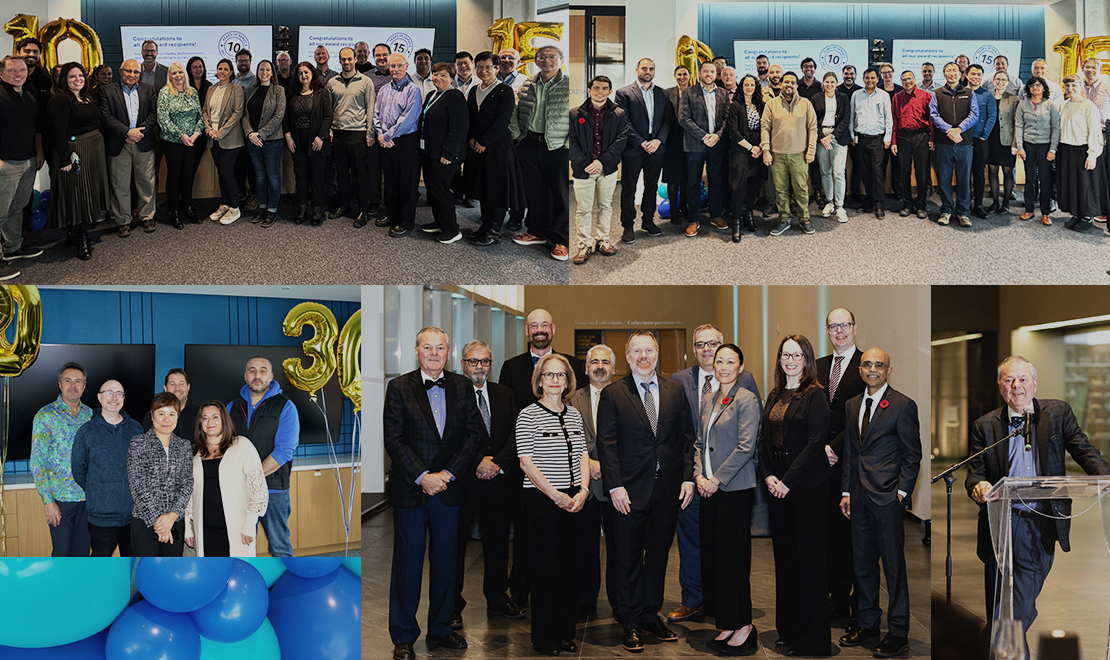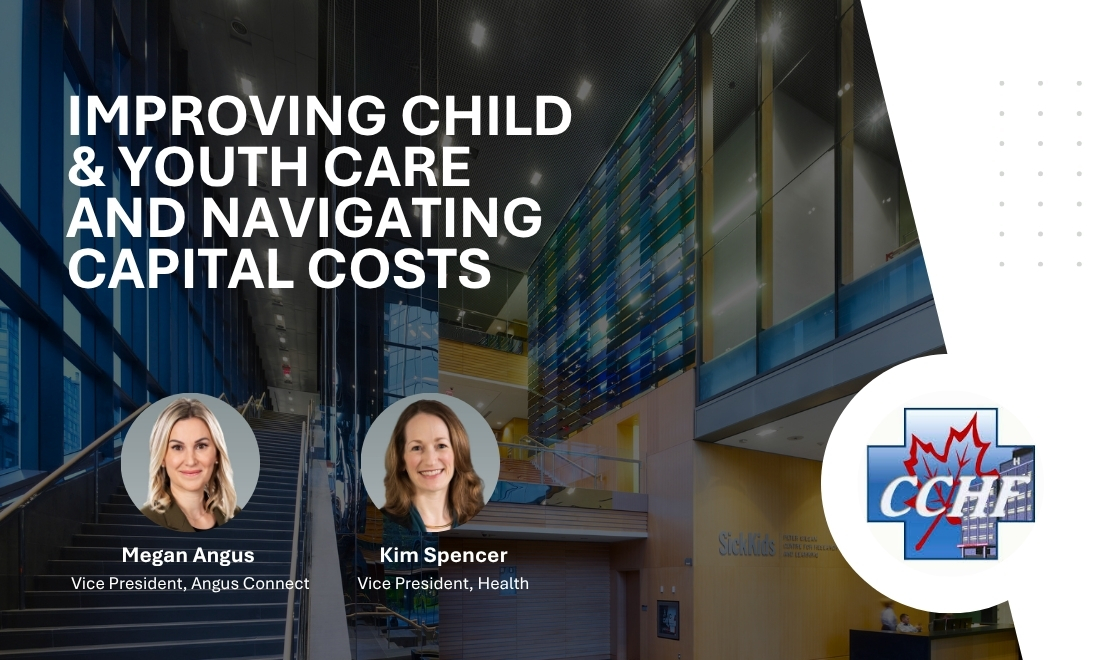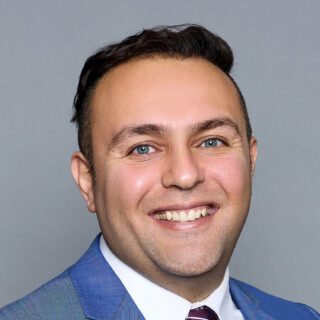Mike Hassaballa, HH Angus' Lead Consultant on Energy Infrastructure, spoke at the 'Buildex Alberta' conference last week on 'How Smart Technologies can Turn Liability into Longevity'. In the article below, Mike details how asset owners can fight obsolescence with smart electrified buildings, and drive resilience, compliance and competitiveness in a rapidly shifting market.
There is one simple way to think about a building’s value in the next decade. If a building can provide comfort, low carbon, and low operating cost with clean verifiable data, it stays relevant. If it cannot, it drifts toward becoming a stranded asset. Owners will feel this pressure from every angle, not just from city energy or carbon policies. Building tenants expect quiet, comfort, and clean air. Modern investors ask for credible ESG numbers. Building operators need tools that actually reduce complaints and service truck visits. The good news, it is possible to combine these angles without compromising your asset’s value.
Here we explore the practical version on what moves the needle. It is a tight combination of smart building infrastructure, measured electrification, and a portfolio plan that respects real constraints like peak demand, labor availability, and capital flow windows.
What does a “stranded asset” looks like in practice?
You do not wake up one day to a notice that your tower is “stranded.” It starts with small symptoms:
- Indoor Air Quality complaints rise after controls change, so the operator overrides the schedule and energy use climbs.
- A retrofit gets delayed because the design cannot reconcile peak demand charges with added electric load.
- Annual ESG reports ask for Scope 1 and 2 data at the tenant level, but meters are missing and spreadsheets break.
None of these are dramatic events. But combining them is value-eroding. The pattern is consistent. Fragmented systems and poor visibility. Seasonal electricity peaks that were never modeled with costs in mind. Electrification framed as equipment swaps, not a systems decision.
Data first, then power, then heat
Here are three fundamental layers keep buildings off the “stranded asset” list. The order matters here:
1) Independent data layer
A building without data is a mystery box. The fundamental rule is: You cannot manage what you cannot measure. A data layer is the backbone that sits above Building Management Systems (BMS), electric power meters, energy sub-meters, air quality sensors, and room controls. If you integrate this once and use this data layer consistently, you will own a powerful data model. After that, you can add analytics, dashboards, ESG reporting, and even tap into tenant comfort signals without brittle one-off feedback calls.
What does this change look like?
- Operators can see across sites.
- Asset managers get a clean view of energy, demand, and comfort.
- Vendors compete on features, not on keeping data.
A building data layer becomes more than an “IT special project”. It becomes the foundation for decision making.
The test: If it takes more than an hour to pull last month’s hourly kW, kWh, supply air temp, and CO₂ per floor, you do not have a real data layer yet.
2) Power and energy visibility
Electrification fails on paper when peak kW or power quality surprises you. You need line-of-sight on three things...
- Demand shape: where the winter and summer peaks occur
- Coincidence: which system demands happen at the same time
- Rate Structure: how demand charges and time-of-use really price your curve.
The math here is not very complicated. It just needs to be done with your own building measured profile, not a template.
- Monthly demand cost = demand charge × peak kW
- Annual energy cost = sum of kWh × rate, by period
- Avoided cost from a measure = ΔkW × demand charge + ΔkWh × rate.
There is always a constraint for electrification sizing:
Electrical service headroom ≥ winter design kW with smart controls in place.
If this electrical headroom is tight, most people abandon electrification. But this may not be always the best path‒ there may be an option to phase it in. This happens by lowering the electrical peak demand using smart controls and sequencing, setpoint trims, thermal storage, and envelope work. A successful strategy may be moving first on energy measures that pay back quickly.
3) Heat and cooling with a winter plan
Heat pumps work in Canada. They need a proper design envelope, correct sizing, and a clear backup logic for the rare extreme. The common mistakes with heat pump installations are predictable:
- Sizing from nameplate data of existing equipment instead of measured loads
- For air source heat pumps, ignoring defrost behavior in control sequences
- Leaving commissioning for the end, then skipping it under schedule pressure.
Two simple equations to keep in mind:
- Seasonal COP target for heat pump:
COPseasonal = weighted average of COP(Toutdoor) by bin hours
- Simplified Levelized cost of heating to compare options:
LCOH = (Capex × CRF + Annual Opex) ÷ annual useful heat (kWhₜₕ)
where CRF is the capital recovery factor at your discount rate.
Use these equations with your energy rate structures and your hourly weather. Then size the equipment. Adopt a clear fallback logic, and make sure you commission systems properly.
Some pilots prove value
Science, numbers, and theory are fine, but some decision-makers want proof. Here is a pilot blueprint that you can run without waiting for the renewal budget cycle.
- Scope: one floor or one wing of a representative building
- Steps: find measuring and instrumentation gaps, stand up the independent data layer for that floor/zone/wing, add room-level control, connect power monitoring, and tune up existing sequences
- KPIs: comfort within range, peak kW for the zone, start-stop cycles per hour, top complaint categories, kWh intensity per square foot, and a simple operator touch metric
- Target: fewer complaints, a reduced peak, and a simple, clear, report or dashboard that decision makers can read.
If this clears the bar, scale to a whole building using the same pattern. Document the before/after with data, and keep the message simple: “We cut complaints by X percent and trimmed Y kW. CAPEX was Z. Payback is justified.”
ESG reporting that is not duct tape
Most ESG frustration is not philosophical, it is more about the data. If your team is still emailing spreadsheets of monthly gas and electricity to a consultant, two things are true. The errors are expensive, and the insights are late. Consider the following instead:
- Normalize metering: whole building, major end uses, tenant where relevant
- Define a single source of truth in your data
- Automate monthly and track carbon with published factors
- Visualize to your stakeholders so they understand the asset, the portfolio, metrics per square foot, and per occupant.
ESG then becomes a feedback loop for operations; for example, comfort complaints are fewer when the supply air temp control is stable. Electricity peaks flatten when morning warm-up is sequenced. GHG and carbon reduction follows.
People and process are the core of smart, relevant buildings
Smart buildings fail when they are sought after as a novelty. They succeed when operators are considered and trained. The most effective change happens when operators and energy teams communicate. That culture keeps the technology use effective and the savings consistent.
Operator rules of thumb that actually help:
- If a setpoint is not documented, it will drift
- If a fault stays uncleared for weeks, it is either mis-prioritized or mis-owned
- If the dashboard has 50 KPIs, no one will act.
Closing thought
Smart buildings and electrification are not parallel tracks. Together they are the shortest path to resilient, valuable assets that tenants want and investors trust. If your portfolio can show comfort, clean air, low carbon, and predictable bills in a couple of plots, you are already ahead. If it cannot, now is the time to build it.
For more information on smart building infrastructure for your real estate assets, contact:







